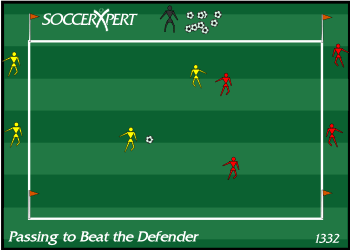

The German soccer team won the 2014 World Cup in Brazil 1:0 against Argentina and Lionel Messi, who is well known globally as the best forward in the world. Therefore, more research would be helpful to develop important physical skills in soccer players categorized by positions. As an explanation, soccer players generally train using normal exercise routines rather than individualized physical or skillful abilities for specific positions. Previous studies have found no significant difference in physical characteristics or trained ability by position.

These differences suggest that differential physical training based on position cannot be the only influencing factor. (2013) found that long distance kick power was stronger in defenders among middle school players. (2005) reported no significant differences in ball control, dribbling, passing, and shooting in youth players based on position, whereas a report by Lee et al. This controversial issue has implications on overall soccer skill. Some have argued that midfielders have higher anaerobic exercise capacity ( Son et al., 2003), whereas others reported that forwards have higher capacity ( Gil et al., 2007).

Therefore, more research on this topic is required despite limitations in training programs for youth players. (2008) reported a difference in size and physical ability according to position. The somatotype components and physical abilities of soccer players are not significantly different by position ( Noh et al., 2015 Ruas et al., 2015), but Gil et al. Reports on the individual fitness and physical characteristics of each position can provide important information on improving match results.

(2000) reported that midfielders cover the greatest overall distance while acting as a link between the defense and attack. One of the most important elements for a soccer player is endurance. A forward must have quick judgment and the ability to find holes in the opposing defense, a midfielder needs agility and must be adept at long and short passing, and a defender should be able to jump high as well as be effective at headers and tackling ( Kim, 2000). Specialized training for each position is required to improve these conditions. In the game of soccer, various skills, strategies, and physical elements are required to perform well. Therefore, we suggest that middle and high school soccer players should improve aerobic, an-aerobic capacity, and soccer skills irrespective position to achieve high-level soccer performance. The results show significant differences in anaerobic capacity and soccer skills according to position in youth soccer players. However, anaerobic capacity was significantly higher in defenders than midfielders ( P<0.05), and soccer skills were significant lower in goalies than in other positions ( P<0.01). There was no significant difference in aerobic capacity according to position. All subjects were subjected to the Wingate test for anaerobic capacity, shuttle run test for aerobic capacity, and pass, kick, dribble, and shooting tests for soccer skills. A total of 101 high school soccer players were selected and were classified into goalkeeper (n=7), defense (n=37), midfield (n=39), and forward (n=18) positions. The purpose of this study was to compare performance factors of youth soccer players according to position.


 0 kommentar(er)
0 kommentar(er)
